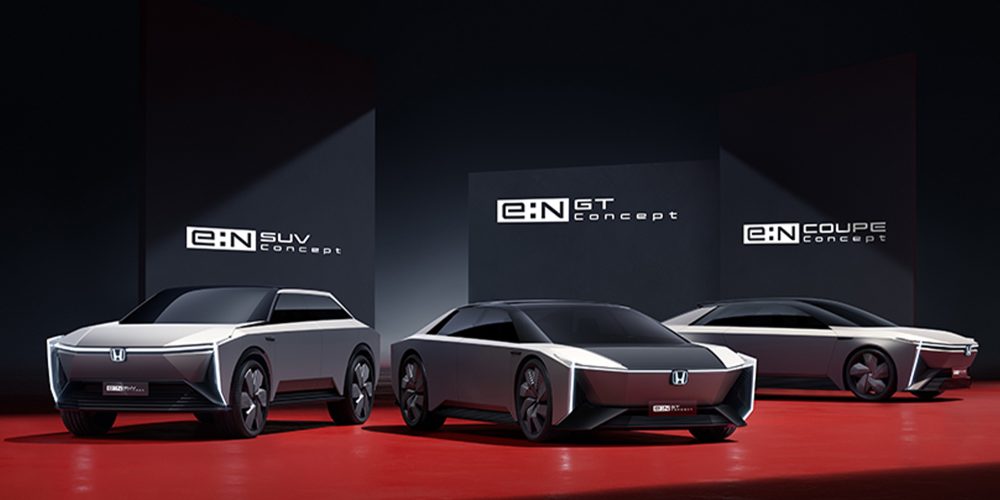Japanese automaker Honda Motor Co. recently stated it is still undecided on where to manufacture EVs in the United States, questioning the country’s demand despite soaring sales numbers from competitors miles ahead in their own electrified transitions.
Honda is a legacy automaker that, like many, has shared goals to have 100% electric sales by 2040, although a huge chunk of that strategy includes Hydrogen Fuel Cell Vehicles (HFCVs).
In terms of BEVs however, Honda has shared less of a game plan compared to the rest of the industry. Last summer, Honda shared its “first volume BEV,” the Prologue – one of two EVs coming to the US in 2024, based on GM’s Ultium electric platform.
The second EV will be an electric Acura SUV. While these efforts from Honda have been publicized, they remain sporadic, haphazard even. Especially as the company’s ambitions for future EVs pertain to the US market.
In October there was a glimmer of hope for US consumers as Honda outlined a new electrification strategy through 2030 led by its new e:N branding. The plan includes the introduction of 10 Honda-brand EV models in the next five years – but only in China, where it plans to build a massive new factory.
In more recent news, Honda is definitely bringing the aforementioned Ultium EVs to the United States, but anything more than that remains uncertain. Honda’s reasoning behind the uncertainty lacks lucidity and sounds a bit familiar.

Honda is apparently not quite sold on US demand for EVs.
According to a recent report by Automotive News, Honda is still deciding where it will manufacture EVs in the United States, making a point to say that a lot of uncertainty surrounds how much actual demand there is for electric cars and trucks. Dave Gardner, executive vice president of Honda US spoke to the automaker’s EV sales expectations:
We’ve told our Honda dealers that initially this is going to be very regional. What is the consumer uptake? Right now, I think that’s something that’s a little out of whack.
Gardner is referring to other automotive competitors quickly pivoting to all-electric lineups and flooding the market with new zero-emission options for American consumers. Rather that note an uptick in EV adoption and consumer education on the benefits of EVs, Honda claims tighter fuel economy standards are the reason for the transition, citing Tesla as the heir apparent.
However, one could argue that EV interest and sales are up all around, as Honda’s competitors begin to publicly share their Q4 and annual EV sales totals for 2021 – many of which saw YOY growth over 100%.
American automotive darling Ford has taken electrification quite seriously in recent years and has already seen tremendous interest surrounding its EVs. The upcoming F-150 Lightning has over 200,000 reservations, and Ford has doubled its production capacity twice already to meet its demand. This hype has led the automaker’s stock to recently soar past a $100 billion valuation.
The bigger issue here appears to be Honda’s opposition of the Biden administration’s proposed tax incentives that cater to EVs made on US soil with union labor. This would prevent Honda customers from receiving the full $7,500–$12,500 credit – depending on what it inevitably ends up being. They’re not alone in that frustration as other automakers like Volkswagen have shared similar sentiments.
Japanese competitor Toyota has gone as far as launching an ad opposing the pro-union tax credit. Coincidentally or not, Toyota has been another automaker that has dragged its feet on EVs for so long that it’s buried itself up to its knees. Still, even Toyota has softened to the idea of EVs, although it still clings tight to its hybrid blankie each night.
Honda stated it will soon share the US manufacturing location for the Prologue and Acura EVs.
Can’t wait.
FTC: We use income earning auto affiliate links. More.
Subscribe to Electrek on YouTube for exclusive videos and subscribe to the podcast.